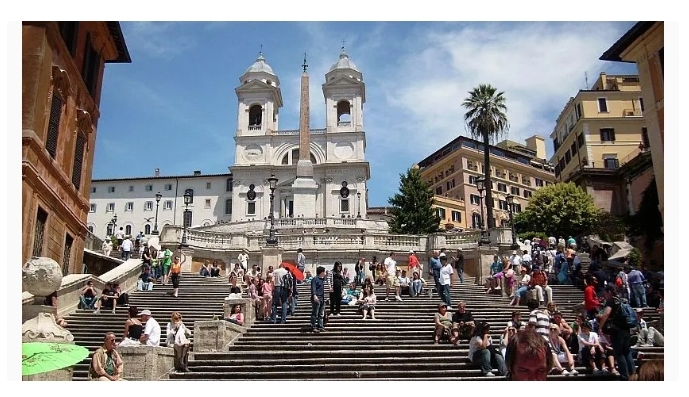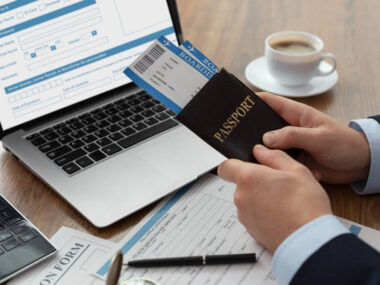Imagine starting a new chapter in Italy, a country bursting with history, incredible food, and stunning landscapes, from Rome’s ancient ruins to the rolling vineyards of Tuscany. On June 30, 2025, Reuters shared exciting news: Italy’s government, under Prime Minister Giorgia Meloni, is rolling out nearly 500,000 work visas for non-EU nationals from 2026 to 2028 to tackle labor shortages. Starting with 164,850 visas in 2026 and reaching a total of 497,550 by 2028, this program opens doors for people like you to live and work legally in Italy. As a scholarship and opportunity blogger at kigems.com, I’m thrilled to walk you through this chance to build a life in Italy. This guide, based on the Reuters report and official sources, covers why this matters, who can apply, what you’ll gain, how to get started, and tips to make it happen. As of 6:56 AM WAT on August 20, 2025, the visa process is gearing up so let’s dive in and get you ready!
Why Move to Italy with a Work Visa?
Italy’s got a lot going for it: a vibrant economy, a warm culture, and a need for workers to keep things running smoothly. With an aging population and fewer births than deaths (281,000 more deaths in 2024 alone), the country’s population dropped to 58.93 million. That’s why Italy is welcoming non-EU workers to fill gaps in industries like farming, tourism, healthcare, and construction. Here’s why this could be your moment to make the move:
- Job Opportunities: From picking fruit in Sicily to caring for families in Milan, Italy offers stable jobs with decent pay in sectors that need you.
- Amazing Lifestyle: Picture yourself sipping espresso in a sunny piazza or exploring historic cities on weekends—Italy’s culture is hard to beat.
- Healthcare and Benefits: You’ll get access to Italy’s National Health Service (SSN), offering affordable medical care, plus other worker protections.
- Legal Path to Stay: These visas let you work legally, with a chance to stay longer and even bring your family after settling in.
- Future Growth: Italy needs 10 million immigrants by 2050 to keep its population steady, so your move could lead to a lasting home.
This is the second big push by Meloni’s government, following 450,000 visas issued from 2023 to 2025. It’s a practical plan to boost the economy while keeping migration legal and organized.
What’s the Deal with the Decreto Flussi 2026–2028?
The Decreto Flussi is Italy’s way of managing work visas for non-EU folks. Approved on June 30, 2025, this plan will bring in 497,550 workers over three years. The breakdown includes:
- 2026: 164,850 visas, including 88,000 for seasonal jobs (like harvesting crops or working in hotels) and 76,850 for permanent roles, with 13,600 set aside for caregivers and housekeepers.
- 2027–2028: More visas to hit the 497,550 total, with numbers rising slightly each year based on what businesses need.
The government worked with employers and unions to set these numbers, making sure they match real job demands. They’ve also added smart tweaks, like spreading visas across different regions and offering training abroad to help you hit the ground running.
Who Can Apply for These Visas?
This program is open to non-EU nationals, but there are a few boxes to check:
- Where You’re From: Anyone from a non-EU country can apply, but some spots are reserved for people from countries that help Italy manage illegal migration (like running awareness campaigns).
- Job Offer: You’ll need a job offer or contract from an Italian employer. They apply for you, so finding a job is step one.
- Types of Work:
- Seasonal Jobs: Think fruit picking or hotel work (88,000 spots in 2026), lasting 20 days to 9 months.
- Permanent Jobs: Roles in construction, healthcare, or other fields (63,250 spots in 2026).
- Caregiving: Jobs like looking after the elderly or disabled (13,600 spots in 2026).
- Self-Employment: A few spots for starting your own business, but you’ll need a solid plan.
- Language Skills: You don’t need to speak Italian fluently, but knowing some basics (A1–A2 level) makes you stand out and helps you settle in.
- Money Matters: Show you’ve got enough cash to cover your first few months (about €1,000–€2,000/month, depending on where you live).
- Health Insurance: You’ll need private insurance at first or sign up for Italy’s SSN once you arrive.
You can’t have a criminal record or be banned from Schengen countries. Some jobs, like nurses, might skip the quota limits if an employer sponsors you directly.
What’s in It for You?
Moving to Italy with a work visa comes with some great perks:
- Legit Work: You’ll have a legal job with fair pay, labor rights, and social security, so you’re protected.
- Job Stability: Sectors like farming (backed by groups like Coldiretti) and healthcare need workers, offering steady roles.
- Healthcare: Join Italy’s SSN for low-cost or free medical care, from doctor visits to hospital stays.
- Stay Longer: Seasonal visas can turn into longer permits, and after five years, you could apply for permanent residency.
- Live the Italian Life: Enjoy Italy’s food, festivals, and friendly communities, with free language classes to help you fit in.
- Bring Your Family: Once you’re settled, some visa types let your spouse and kids join you.
This program is all about helping you contribute to Italy’s economy while building a better life for yourself.
How to Apply for the Work Visa
The Decreto Flussi uses a “click day” system, where employers apply for you online. Here’s how it works:
- Find a Job:
- Look for jobs on sites like Indeed.it or LinkedIn, or work with agencies that focus on farming, tourism, or caregiving.
- Your employer needs to prove they can’t fill the job locally and get approval from a labor office.
- Get Your Documents Ready:
- A valid passport (good for at least six months).
- Your job offer or contract.
- Proof of a place to stay in Italy (like a rental agreement or employer housing).
- Bank statements showing you can support yourself at first.
- A clean criminal record from your home country.
- Employer Applies:
- On “click day” (likely early 2026, announced by December 2025), your employer submits your application through the Italian Ministry of Interior’s portal.
- It’s first-come, first-served, and visas are split by region to match local needs.
- Apply for the Visa:
- If approved, you’ll apply for a work visa at the Italian embassy or consulate in your country.
- Bring your documents, give fingerprints, and pay €116 (2025 fee).
- It takes 4–8 weeks, so apply by October 2025 for a January 2026 start.
- Arrive and Settle:
- Enter Italy within 180 days of getting your visa and apply for a residence permit (Permesso di Soggiorno) at a local Questura within eight days.
- Permit costs: €40 for short-term, €50 for 1–2 years, or €100 for longer.
- Get Settled:
- Sign up for SSN healthcare and join free Italian classes offered by local governments.
Keep an eye on the Ministry of Interior’s website for “click day” dates, usually set in late 2025.
Costs to Plan For
- Visa Fee: €116 per person, plus €30–€50 for fingerprints.
- Residence Permit: €40–€100, based on how long it’s valid.
- Living Costs: €1,500–€2,500/month in big cities like Rome; €800–€1,500 in smaller towns like Puglia.
- Moving Costs: $1,000–$3,000 for flights and shipping stuff, according to move.org.
- Insurance: €120–€300/year for private health cover until you join SSN.
Many seasonal jobs, like farming, include housing, which saves money. Plan for upfront costs and look into extra work if you’re on a non-seasonal visa.
Tips to Make It Happen
- Start Now: Reach out to employers by September 2025 to lock in a job before the 2026 “click day.”
- Learn Some Italian: Take an A1–A2 course online or locally—it’ll help you get hired and feel at home.
- Connect with Others: Check out kigems.com or expat groups like InterNations for job tips and support.
- Double-Check Documents: Make sure everything’s accurate and translated into Italian if needed.
- Watch for Updates: The Ministry of Interior will post “click day” dates—don’t miss them!
- Plan Your Stay: Book a short-term place (like Airbnb) until you get employer housing or a long-term rental.
Stick to official channels like embassies or the Ministry’s website to avoid scams charging crazy fees.
Things to Watch Out For
- Limited Spots: In 2024, only 10% of applications became permits because of red tape, so your employer needs to act fast on “click day.”
- Visa Delays: Embassies can take 4–8 weeks; submit everything correctly to avoid hiccups.
- Settling In: Learning Italian and dealing with local offices (like the Questura) can feel overwhelming to use free integration programs to help.
- Be Honest: Don’t fake any documents, or you risk getting denied or deported.
Get travel insurance to cover unexpected issues, as Italy’s government won’t help with visa or travel problems.
Real People, Real Success
Ahmed from Tunisia landed a seasonal visa in 2024 to work in Sicily’s olive groves. His employer gave him housing and a €1,200/month wage, letting him save up. Now, he’s eyeing a permanent visa in 2026, a story shared on kigems.com.
Maria, a caregiver from the Philippines, moved to Milan in 2023 under the domestic worker quota. Her steady job and healthcare access paved the way for her family to join her, showing how this program changes lives.
What’s Next for Italy’s Visa Program
Italy plans to keep growing the Decreto Flussi beyond 2028 to bring in more workers, aiming for 10 million immigrants by 2050 to balance its population. New rules, like splitting visas by region and training programs abroad, will make things smoother. Stay tuned to official updates for future chances.
Your Next Steps
- Get Moving: Find a job by late 2025 to be ready for the 2026 “click day.”
- Prep Your Papers: Make sure all documents are ready and legit.
- Learn Italian: Even basic skills go a long way for work and life.
- Focus on Hot Jobs: Look for roles in farming, healthcare, or tourism—they’re in demand.
- Save Smart: Plan for moving costs and use employer perks like housing.
- Stay in the Loop: Follow kigems.com and the Ministry’s website for news.
Conclusion: Start Your Italian Adventure
Italy’s offer of 497,550 work visas from 2026 to 2028 is your chance to live and work in a country full of opportunity and charm. By landing a job, working with your employer on the Decreto Flussi, and preparing carefully, you can build a new life in Italy. Start reaching out to employers today and take the first step toward your Italian dream.
For more details and to apply, visit the Italian Ministry of Interior’s visa portal: https://www.interno.gov.it/it/temi/immigrazione-e-asilo.






